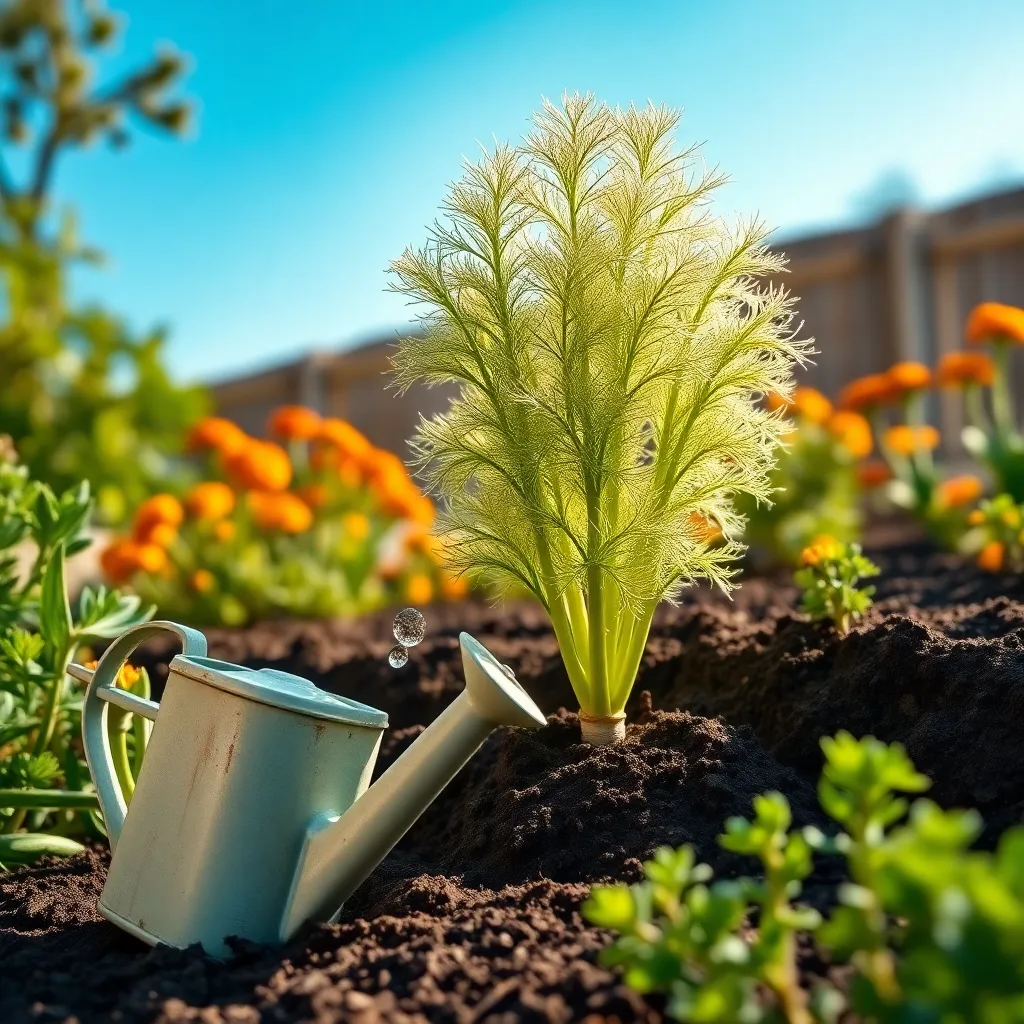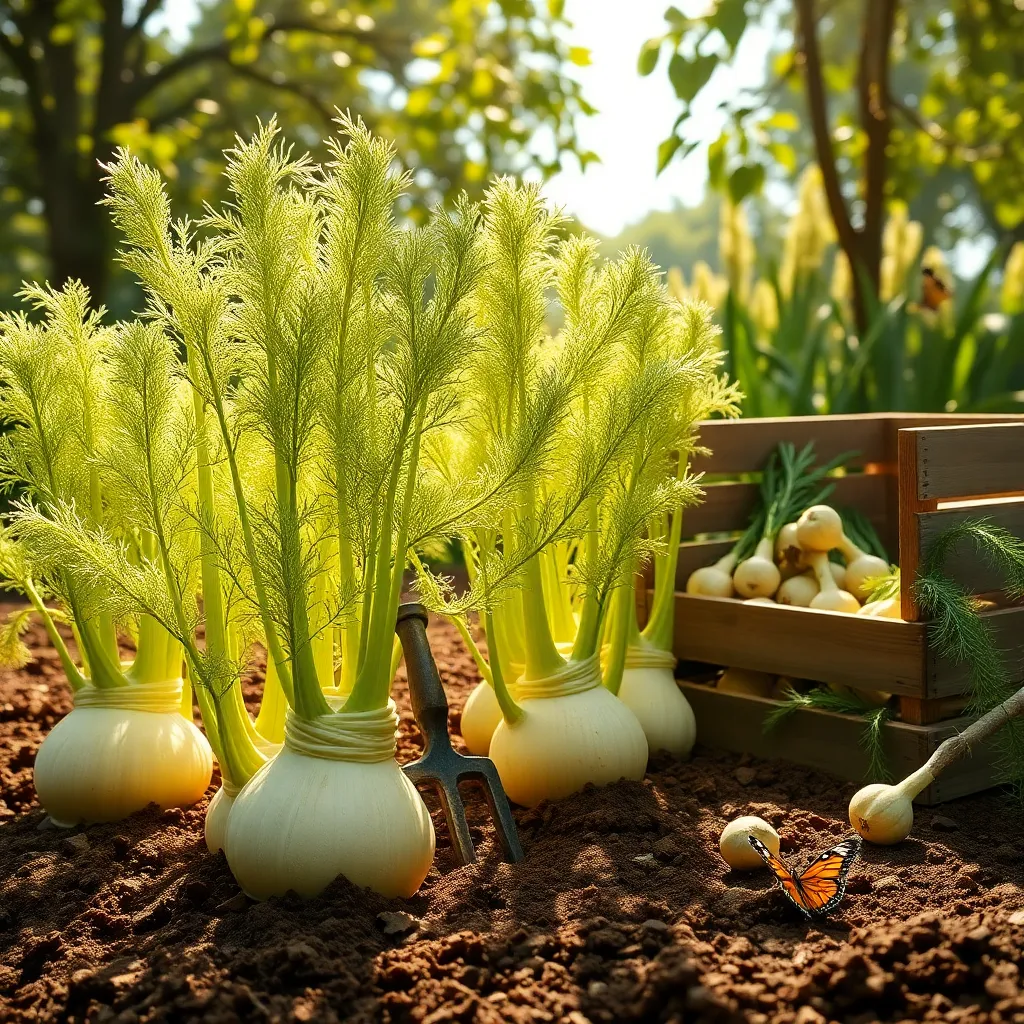Imagine stepping out into your garden and being greeted by the feathery fronds and anise-like aroma of fresh fennel. Whether you’re a novice gardener or a seasoned green thumb, growing fennel at home can be a rewarding addition to your gardening repertoire, offering both culinary and aesthetic benefits. This versatile plant not only enhances the flavors of your favorite dishes but also adds a touch of elegance and structure to your garden with its graceful, towering stalks.
For those just starting their gardening journey, fennel is a fantastic choice due to its relatively straightforward care requirements and adaptability. Experienced gardeners will appreciate the plant’s dual role, providing both a delicious bulb and a variety of seeds that can spice up any meal or herbal tea blend. In this article, you’ll discover everything you need to know to successfully cultivate fennel at home, from choosing the right variety for your climate to mastering the art of harvesting and storing your bounty.
As you continue, we’ll delve into the specifics of planting fennel, ensuring you understand the nuances of soil preparation, spacing, and watering to set your plants up for success. You’ll also learn how to troubleshoot common growing challenges, such as managing pests and preventing bolting, to ensure a bountiful harvest. Whether you’re looking to enhance your culinary creations or simply enjoy the beauty of this graceful plant, growing fennel at home is an achievable and rewarding endeavor that promises to enrich your gardening experience.
Select Ideal Fennel Seeds

Choosing the right fennel seeds is the first step toward a successful harvest. For beginners, it’s important to know that there are two main types of fennel: bulb fennel (Florence fennel) and herb fennel (common fennel), each requiring different growing conditions.
When selecting fennel seeds, consider your climate and the season. Bulb fennel thrives in cooler temperatures, making it ideal for spring or fall planting, while herb fennel can tolerate warmer conditions and is often planted in early summer.
For those looking to develop more advanced skills, saving seeds from a previous harvest can be a rewarding endeavor. Ensure that the seeds you collect are from healthy, mature plants, and store them in a cool, dry place to maintain their viability for the next growing season.
To increase your chances of success, look for seeds that are organic and non-GMO, which often produce more robust plants. Additionally, consider the specific variety of fennel you wish to grow, such as ‘Zefa Fino’ for bulb fennel, known for its consistent growth and flavor.
Prepare Well-Drained Soil

To grow fennel successfully, it’s essential to ensure your soil is well-drained. Start by selecting a location in your garden that doesn’t have standing water after rain, as fennel roots can rot in overly wet conditions.
Begin by conducting a simple soil drainage test. Dig a hole about 12 inches deep and fill it with water; if it drains within a few hours, your soil is well-drained, but if not, you’ll need to amend it.
Amending your soil can be done by mixing in organic matter such as compost or well-rotted manure. These materials not only improve drainage but also enrich the soil with nutrients that fennel plants thrive on.
Consider incorporating coarse sand or fine gravel if your soil is particularly heavy clay. This addition will help break up the clay particles, allowing water to flow more freely around the roots.
For those working with sandy soils, add organic matter to improve moisture retention while still maintaining good drainage. Regularly check your soil’s condition, especially after rainfall, to ensure it’s meeting the fennel’s preferences for growth.
Sow Seeds in Early Spring

As the cold of winter starts to fade, it’s time to begin sowing fennel seeds in early spring. Fennel thrives when planted directly into the soil, as it doesn’t transplant well due to its sensitive taproot.
You should aim to sow fennel seeds when the soil temperature reaches around 50°F (10°C). This usually coincides with the time when the risk of frost has passed, ensuring that your seeds can germinate safely.
Space your seeds about 12 inches apart to allow enough room for the plants to grow without crowding. Cover them lightly with soil, no more than 1/4 inch deep, to promote optimal germination.
Once sown, it’s important to maintain consistent moisture in the soil. A gentle watering every few days should suffice, but make sure not to overwater, as fennel prefers well-drained conditions.
As a tip for the more experienced gardener, consider sowing seeds in succession every two weeks for a continuous harvest. This approach can provide a steady supply of fennel throughout the season, ensuring you always have fresh bulbs at your disposal.
Water Consistently and Moderately

Consistent and moderate watering is key to successfully growing fennel at home. Fennel prefers soil that is moist but not waterlogged, so aim to keep the soil evenly damp.
Avoid letting the soil dry out completely between waterings, as this can stress the plant. On the other hand, too much water can lead to root rot, so ensure your fennel is planted in well-draining soil.
For best results, water your fennel deeply once or twice a week, depending on the weather conditions. During hotter months, you might need to increase the frequency slightly, ensuring the top inch of soil remains moist.
Using mulch around your fennel plants can help retain moisture and reduce the need for frequent watering. Additionally, mulch helps in keeping the soil temperature stable, which is beneficial for fennel’s growth.
Harvest Fennel at Maturity

Fennel is ready for harvest when the bulb reaches approximately the size of a tennis ball, typically around 3 to 4 inches in diameter. Be vigilant and check your plants regularly, as letting them grow too large can result in a tougher texture and a more pronounced, less sweet flavor.
Use a sharp knife or garden shears to cut the fennel bulb at the base, just above the soil line. This technique helps prevent damage to the bulb and encourages potential regrowth if conditions are favorable.
For optimal flavor, consider harvesting fennel in the morning when the essential oils are most concentrated. This is particularly beneficial if you plan to use the leaves or seeds, which can be harvested even after the bulb is removed.
Store harvested fennel bulbs in a cool, dry place, and use them within a week for the best taste and texture. If you’re keen on preserving fennel’s freshness, wrap the bulbs in a damp paper towel and place them in a perforated plastic bag in the refrigerator.
Conclusion: Growing Success with These Plants
In conclusion, growing fennel at home offers valuable lessons for nurturing relationships. First, just as fennel requires the right soil, relationships thrive on a foundation of trust and understanding. Second, regular watering reminds us of the importance of consistent communication to keep connections flourishing. Third, providing ample sunlight parallels the need for shared experiences that illuminate our bonds. Fourth, pruning promotes healthy growth, much like addressing issues head-on strengthens our partnerships. Lastly, patience in waiting for fennel to mature mirrors the dedication required to see relationships blossom over time.
As an actionable next step, consider setting aside time this week to nurture one aspect of your relationship, whether it’s a heartfelt conversation or a shared activity. Remember, even small efforts can yield profound growth.
Don’t forget to save or bookmark this article as a handy guide. Having these insights at your fingertips can be invaluable as you cultivate deeper connections.
Looking ahead, embracing these principles can lead you to a future filled with meaningful, nourishing relationships. With each step you take, you’re investing in a flourishing garden of connections, ripe with potential and joy. Keep growing, and let love thrive.
